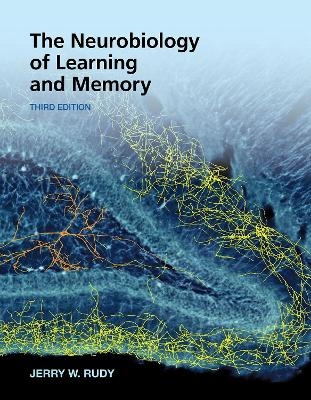
The Neurobiology of Learning and Memory
Oxford University Press Inc (Verlag)
978-1-60535-934-2 (ISBN)
illustrated with full-color photographs and figures depicting important concepts and experimental data. The goal of this book remains the same as it was for the previous editions-to present a story of how memories are
made. The story has three major parts, which have been expanded to include new chapters or reorganized to incorporate new findings and concepts.Part One explores the molecular basis of the synaptic changes that support memory. It begins with an overview of memory from the perspective of the brain. It next describes the long-term potentiation methodology used to study how synapses are modified and concepts needed to understand the organization of synapses. The remaining
chapters are organized around the idea that the synaptic changes that support long-term potentiation evolve in four overlapping stages referred to as (a) generation, (b) stabilization, (c) consolidation,
and (d) maintenance. The goal of each chapter is to reveal that each stage depends on unique molecular processes and to describe what they are. There are now separate chapters on the generation and stabilization of long-term memory and the chapter Consolidating LTP: Specific Mechanisms has been extensively revised to give proper treatment to the local events in the dendritic spine region that consolidate memories.Part Two builds on this foundation to show how
molecules and cellular processes that have been identified from studies of synaptic plasticity also participate in the making of memories. It discusses some of the basic conceptual issues researchers face in trying
to relate memory to synaptic molecules and describes some of the behavioral and neurobiological methods that are used. The chapters describing the processes involved in memory formation and consolidation have been extensively modified to provide a more detailed account of the molecular events that are engaged to ensure that established memories endure. The chapter Maintaining Long-Term Potentiation has been revised to provide a broader view of the topic. New chapters focus on recent
advances in the neurobiology of forgetting (The Yin and Yang of Memory: Forgetting versus Maintenance) and the search for engrams (Hunting for Engrams). The Fate of Retrieved Memories chapter has been
significantly revised to emphasize the importance of memory destabilization processes and how they combine with memory integration processes to allow new information to be incorporated into the retrieved memory. Part Three is organized around the multiple memory systems view-that different neural systems have evolved to store the content contained in our experience. Three chapters are aimed at issues that surround how the medial-temporal hippocampal system supports
episodic memory. The first begins with a discussion of Brenda Milner's research on H.M. that directed researchers to the hippocampus. The Hippocampus Index and Episodic Memory chapter has been significantly
revised to include new findings, based on modern molecular techniques, that support Teyler and DiScenna's hippocampus index theory. A separate chapter, When Memories Age, is devoted to issues that emerge when researchers confront what happens as memories grow old. Next the cortical-striatal system and its relationship to what are called behavioral actions and habits is described, and the book ends with a discussion of neural systems involved in the acquisition and removal of emotional
memories.
Jerry W. Rudy is College Professor of Distinction in the Department of Psychology and Neuroscience at the University of Colorado at Boulder. He received his Ph.D. in psychology from the University of Virginia in 1970, and joined the CU Boulder faculty in 1980. He served as Department Chair for ten years and was instrumental in creating the undergraduate Neuroscience degree and served as the Director of that program for several years. The author of over 150 peer-reviewed research papers and book chapters, Dr. Rudy has served on the editorial boards of the Journal of Experimental Psychology: Animal Behavior Processes, Psychobiology, Developmental Psychobiology (Editor in Chief), Behavioral Neuroscience, Neuroscience & Biobehavioral Reviews, Learning and Memory, and Neurobiology of Learning and Memory (Associate Editor). He also served on the governing board and as President of the International Society for Developmental Psychobiology. He has received grant support from the National Science Foundation, the National Institute of Mental Health, and the National Institute of Health. Professor Rudy's research interests center on learning and memory processes. His research focused primarily on memory development and understanding the complementary contributions the hippocampus and neocortex make to learning and memory. Professor Rudy retired in June 2019.
Chapter 1. Introduction: Fundamental Concepts and Historical Foundations
PART 1: Synaptic Basis of Memory
Chapter 2. Memory and the Brain: Central Concepts
Chapter 3. Generating Long-Term Potentiation
Chapter 4. Stabilizing Long-Term Potentiation
Chapter 5. Consolidating LTP: Translation and Transcription
Chapter 6. Consolidating LTP: Specific Mechanisms
Chapter 7. Maintaining Long-Term Potentiation
Chapter 8. Bringing It All Together
PART 2: Molecules and Memory
Chapter 9. Making Memories: Conceptual Issues and Methodologies
Chapter 10. Memory Formation: Early Stages
Chapter 11. Memory Consolidation
Chapter 12. Memory Modulation Systems
Chapter 13. The Yin and Yang of Memory: Forgetting versus Maintenance
Chapter 14 . Hunting for Engrams
Chapter 15. The Fate of Retrieved Memories
PART 3: Neural Systems and Memory
Chapter 16. Memory Systems and the Hippocampus
Chapter 17. The Hippocampus Index and Episodic Memory
Chapter 18. When Memories Age
Chapter 19. Actions, Habits, and the Cortico-Striatal System
Chapter 20. Learning about Danger: The Neurobiology of Fear Memories
Glossary
Subject Index
| Erscheinungsdatum | 21.08.2020 |
|---|---|
| Verlagsort | New York |
| Sprache | englisch |
| Gewicht | 1109 g |
| Themenwelt | Geisteswissenschaften ► Psychologie ► Biopsychologie / Neurowissenschaften |
| Geisteswissenschaften ► Psychologie ► Test in der Psychologie | |
| Medizin / Pharmazie ► Medizinische Fachgebiete ► Neurologie | |
| Naturwissenschaften ► Biologie ► Humanbiologie | |
| Naturwissenschaften ► Biologie ► Zoologie | |
| ISBN-10 | 1-60535-934-3 / 1605359343 |
| ISBN-13 | 978-1-60535-934-2 / 9781605359342 |
| Zustand | Neuware |
| Haben Sie eine Frage zum Produkt? |
aus dem Bereich


